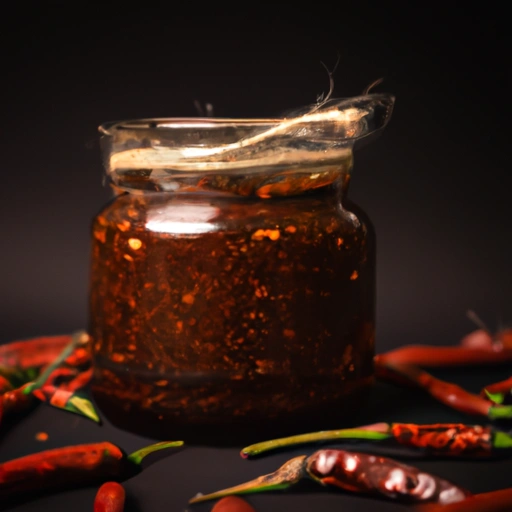Chili Paste
Description

Chili paste is a versatile condiment made from crushed chili peppers combined with various spices, oils, and other ingredients. It is a staple in many cuisines around the world, known for its ability to impart a spicy kick to dishes. The texture and consistency of chili paste can vary from smooth to chunky, and its flavor can range from smoky and mild to fiery hot, depending on the type of chilis and additional components used in its creation.
Common uses
Chili paste is commonly used as a flavor enhancer in marinades, sauces, stews, soups, and various meat dishes. It also serves as a base for making curry pastes and can be used as a spicy condiment to be added at the table. Additionally, it is an essential ingredient in many traditional dishes around the world, playing a significant role in defining their characteristic flavors.
Nutritional value
Calories
A 1-tablespoon (about 17 grams or 0.6 ounces) serving of chili paste typically contains approximately 20 to 30 calories.
Protein
Chili paste provides a small amount of protein, roughly 0.5 to 1 gram per tablespoon.
Fat
The fat content in chili paste can vary depending on the specific ingredients used, but it is generally low, with about 0.5 to 1 gram per tablespoon.
Carbohydrates
Most of the carbohydrates in chili paste come from the sugars and fiber in the peppers, totaling around 3 to 5 grams per tablespoon.
Vitamins
Chili paste can be a source of Vitamin A and Vitamin C, thanks to the chili peppers it contains.
Minerals
It may also contain small amounts of minerals like potassium and magnesium.
Health benefits
Chili paste, with its capsaicin from the chilis, may offer anti-inflammatory properties, pain relief, and could even contribute to a temporary increase in metabolism. The vitamins and antioxidants present in chili peppers can support overall health and well-being.
Potential risks
Consuming chili paste in large quantities may lead to digestive issues for some individuals, and the capsaicin can cause irritation if it comes into contact with skin or eyes. Those with sensitivity to spicy foods should use chili paste sparingly.
Common recipes
Chili paste is used in a myriad of recipes, including chili, stir-fries, marinades for meats, dips, and as a fiery spread on sandwiches and burgers.
Cooking methods
It can be added during cooking to infuse dishes with heat or used as a finishing touch to adjust spiciness to personal preference.
Pairing with other ingredients
Chili paste pairs well with ingredients like garlic, ginger, coconut milk, soy sauce, and a variety of proteins and vegetables.
Summary
Chili paste is a fiery and flavorful ingredient cherished worldwide for its versatility and ability to elevate the taste of food. With its rich historical background and myriad of uses across different cuisines, it remains a universally beloved component that enriches the culinary experience with its spicy zest.